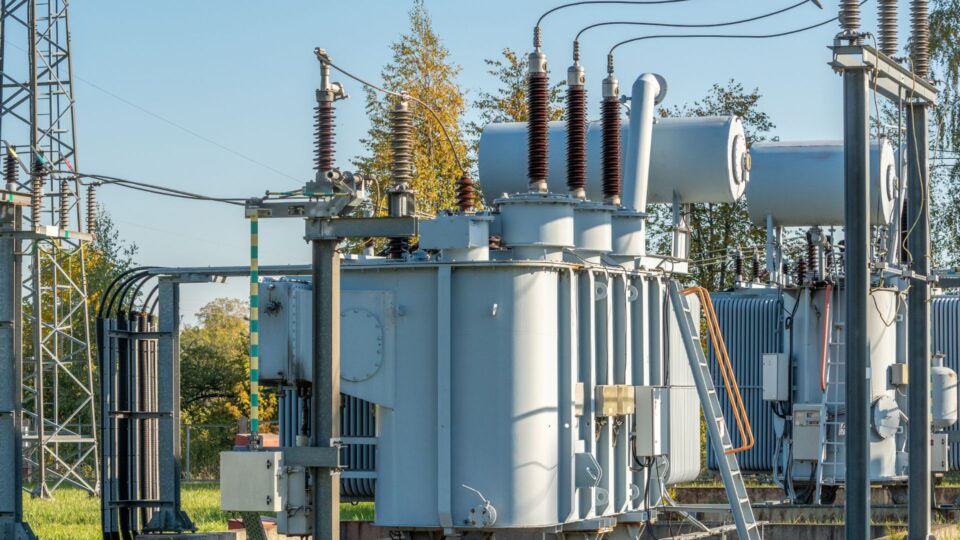When there are intense hot temperatures, this can place strain on your equipment. Since 1910, Australia’s climate has warmed by 1 degree Celsius, meaning the country experiences more extreme weather conditions.
Are you doing enough to prevent your transformers from overheating and degrading?
Read on as we explore the top transformer cooling methods for your industrial facility – and why keeping your equipment cool should be a top priority.
Why do you need to keep your transformer cool?
A transformer performs several instrumental functions within industrial operations:
- It steps the voltage levels up or down to enable efficient transmission and distribution of electricity.
- It can handle high-power loads for manufacturing, power plants, and commercial buildings.
- They provide a safe, stable, and reliable power supply by converting energy to the appropriate voltage levels.
Keeping your transformer in optimal condition is essential for on-site safety and ensuring energy efficiency to prevent unnecessary losses. Here’s what might happen if your transformer overheats:
- Insulation degradation – the insulation of your transformer could degrade over time with excessive heat exposure. This will result in a breakdown of the electrical properties, and ultimately the transformer will fail.
- Shorten lifespan – if the transformer is not effectively cooled, the components will age more quickly, reducing lifespan and decreasing reliability.
- Electrical losses – if your transformer overheats, you could suffer electrical losses, leading to a decrease in energy efficiency and an uptick in operating costs.
- Hazards – in some more severe cases, overheating in transformers can present a fire hazard for your employees and your building’s infrastructure.
How to keep your transformer cool?
Now that you know why you should keep a transformer cool, let’s discuss how. There are many transformer cooling methods for different transformers – knowing the differences can help you find the best option.
Dry transformers
A dry transformer does not use a liquid coolant. Instead, they use solid insulation materials for electrical isolation and cooling of the transformer.
- Air Natural (AN) Cooling – Air natural cooling uses natural convection processes to prevent overheating. It relies on the temperature difference between the transformer and the surrounding air. Air is circulated in the transformer’s core, using natural air movement without fans.
- Air Forced (AF) or Air Blast (AB) Cooling – air forced, or air ‘blast’ cooling relies on transformer cooling fans to move air over the transformer to enhance heat dissipation. By increasing airflow, the AF or AB cooling method allows for improved cooling efficiency, ideal for larger-scale transformers.
Oil immersed transformers
Oil-immersed transformers are surrounded by an insulating oil that provides electrical isolation while acting as a coolant for the transformer.
- Oil Natural Air Natural (ONAN) Cooling – ONAN cooling methods use passive cooling via the convection of the insulating oil and cool air. The heat the transformer produces dissipates into the surrounding air via tank walls, and the warm air creates natural air circulation and flow.
- Oil Natural Air Forced (ONAF) Cooling – ONAF cooling methods combine forced air circulation with the ONAN cooling method for enhanced heat dissipation. Fans and blowers help to force air over the transformer’s surface to increase airflow and hasten convective heat transfer.
- Oil Forced Air Forced (OFAF) Cooling – OFAF cooling uses forced oil and air circulation. While the air hastens the convective cooling process, the oil is pumped through cooling channels to remove heat from the transformer’s core.
- Oil Forced Water Forced (OFWF) Cooling – OFWF cooling combines oil circulation and water circulation for more efficient cooling. The water is pumped through cooling pipes to remove heat, while fans and blowers help to dissipate heat from these cooling surfaces to ensure effective cooling.
Are there any regulations for transformer cooling?
Australian Standard outlines specific recommendations and regulations for transformer cooling in industrial practices. It defines the ideal cooling methods and temperature-rise limits for different transformer types and sizes. Before investing in cooling equipment for your transformers, it’s best to read the regulations.
Choose Fanquip for air circulation cooling equipment
Airflow is an essential component in many transformer cooling methods. You should consider investing in fans and blowers to increase heat dissipation efficiency while keeping the surrounding area cool and comfortable for your employees.
To access assistance in planning your transformer cooling strategy, contact our friendly and expert team here at Fanquip. Our team has expertise in industrial cooling processes and can advise you on the best solution for your transformer.
